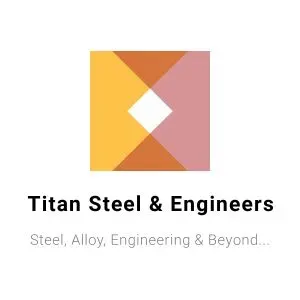Title
“Spring Steel Demystified: Properties, Types & Real-World Applications”
Introduction
- Start with an engaging statement about how spring steel is essential across various industries due to its unmatched strength, elasticity, and resilience.
- Define spring steel and explain why it holds a unique place in manufacturing, automotive, aerospace, and beyond.
- Briefly outline what readers can expect to learn, from its composition and types to its applications, advantages, and future trends.
Body Sections
1. What is Spring Steel?
- Define spring steel and its key characteristics, like high tensile strength, durability, and elasticity.
- Explain how it retains its original shape after deformation, making it ideal for applications involving repetitive stress.
- Mention its distinctive ability to withstand high stress without compromising performance.
2. Material Composition
- Break down the material components of spring steel, such as the inclusion of carbon and alloying elements like silicon, manganese, and molybdenum.
- Explain how these elements contribute to its properties, such as tensile strength, resistance to fatigue, and elasticity.
- Include an easy-to-understand diagram showing the composition of spring steel.
3. Mechanical Properties of Spring Steel
- Explore key mechanical properties such as tensile strength, yield strength, and hardness that make spring steel stand out.
- Discuss properties like its high modulus of elasticity and resistance to wear and fatigue.
- Provide relatable data points (e.g., stress tolerance in kg/cm²) for practical understanding.
4. Types of Spring Steel
- High Carbon Spring Steel
- Characteristics like high hardness and excellent wear resistance.
- Common applications in heavy-duty environments such as machinery.
- Alloy Spring Steel
- Combines strength with flexibility and heat resistance.
- Favored applications in automotive and industrial sectors.
- Stainless Spring Steel
- Focus on corrosion resistance and aesthetic benefits.
- Frequently used in medical and food-grade equipment where hygiene is critical.
5. Applications of Spring Steel
- Automotive Industry
- Examples include suspension systems, leaf springs, and engine components.
- Aerospace Industry
- Lightweight spring steel parts used for aircraft landing gear and internal mechanisms.
- Manufacturing Sector
- Usage in tooling, industrial machines, and other equipment requiring repetitive motion resilience.
- Consumer Goods
- Highlight instances of spring steel use in hinges, watches, and gardening tools.
6. Impact of Heat Treatment on Performance
- Explain how processes like annealing and tempering enhance the mechanical properties of spring steel.
- Demonstrate how controlled heating and cooling improve hardness, yield strength, and durability.
- Highlight common heat treatments used for specific industries such as aerospace and automotive.
7. Advantages and Disadvantages of Spring Steel
Advantages:
- High durability ensures longevity in demanding environments.
- Exceptional elasticity makes it ideal for repetitive stress applications.
- Fatigue resistance enables long-term usage.
Disadvantages:
- Limited corrosion resistance compared to some alternative materials.
- Stiffer and harder to machine due to high strength.
- Requires careful treatment during manufacturing to maximize performance traits.
8. Case Studies in Spring Steel Applications
- Automotive Success Story: Share a real-world example of how spring steel improved the durability and performance of car suspension systems, reducing maintenance costs over time.
- Aerospace Insight: Highlight a success story where lightweight and tough spring steel provided a solution for high-demand aerospace components, ensuring safety and efficiency.
9. Future Trends and Emerging Technologies
- Explore the integration of spring steel into advanced technologies such as robotics, automation, and renewable energy systems.
- Discuss ongoing research and development aiming to make spring steel more corrosion-resistant or compatible with sustainable manufacturing.
- Mention any promising alloys being developed to enhance basic traits like elasticity and fatigue resistance.
Conclusion
- Recap the critical points covered, emphasizing the versatility, durability, and diverse applications of spring steel.
- Highlight its key role in industries ranging from automotive and aerospace to consumer goods.
- End with a call-to-action encouraging readers to explore spring steel solutions for their specific needs or contact [Your Brand/Business Name] for expert advice and quality materials.
SEO Suggestions
- Title: Incorporate “spring steel” at the very beginning, as it’s the primary focus keyword.
- Introduction: Use “spring steel” within the first 100 words to immediately set context for search engines.
- Body Sections: Include “spring steel” strategically in section headings and content flow, such as “types of spring steel” and “applications of spring steel.”
- Variations: Use keyword variations such as “high carbon spring steel” and “alloy spring steel” for enhanced keyword diversity.
- FAQ Section (Optional): Add long-tail keywords such as “how is spring steel used in the manufacturing industry?” to reach targeted search queries.
- Meta Description: Include a short yet compelling description using the keyword, e.g., “Discover spring steel properties, types, and applications in industries like automotive and aerospace. Learn how it drives innovation.”
By following this comprehensive outline, your blog will provide educational value, drive engagement, and rank effectively for the targeted keywords.
